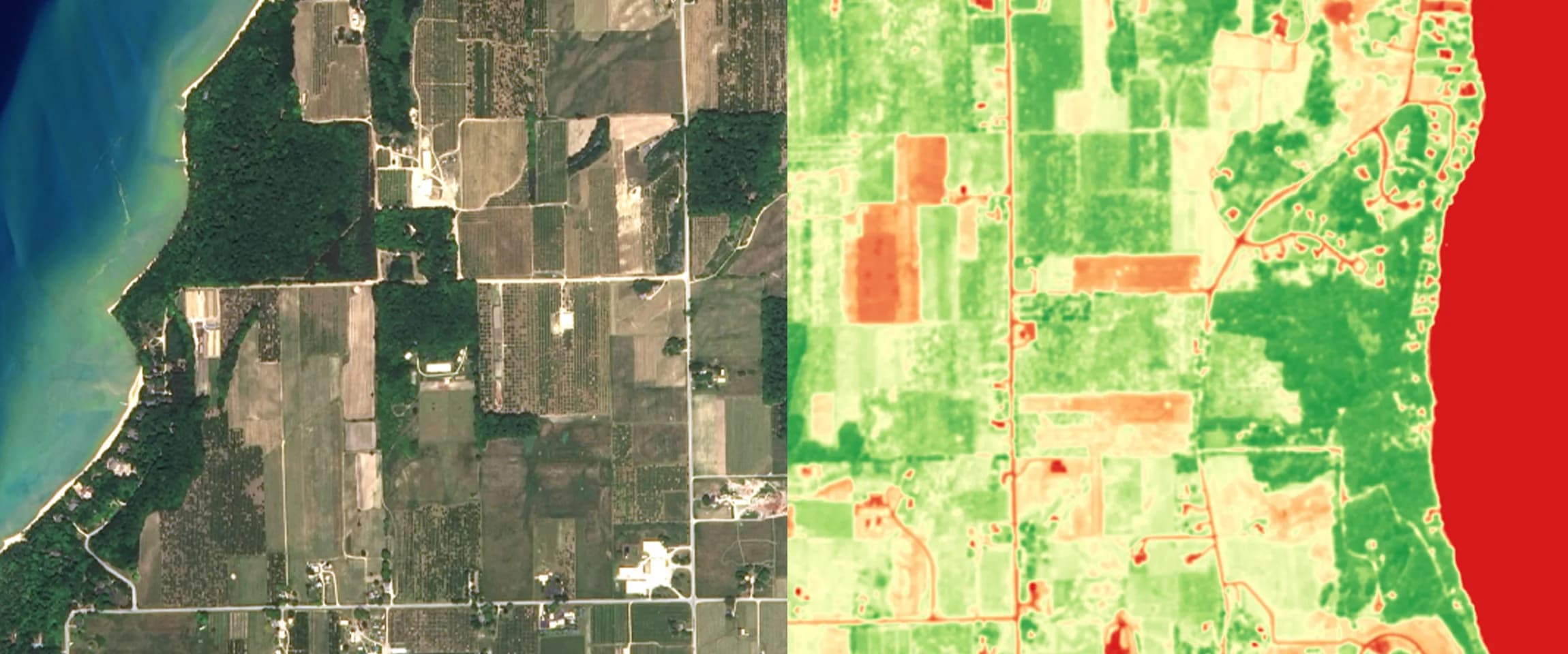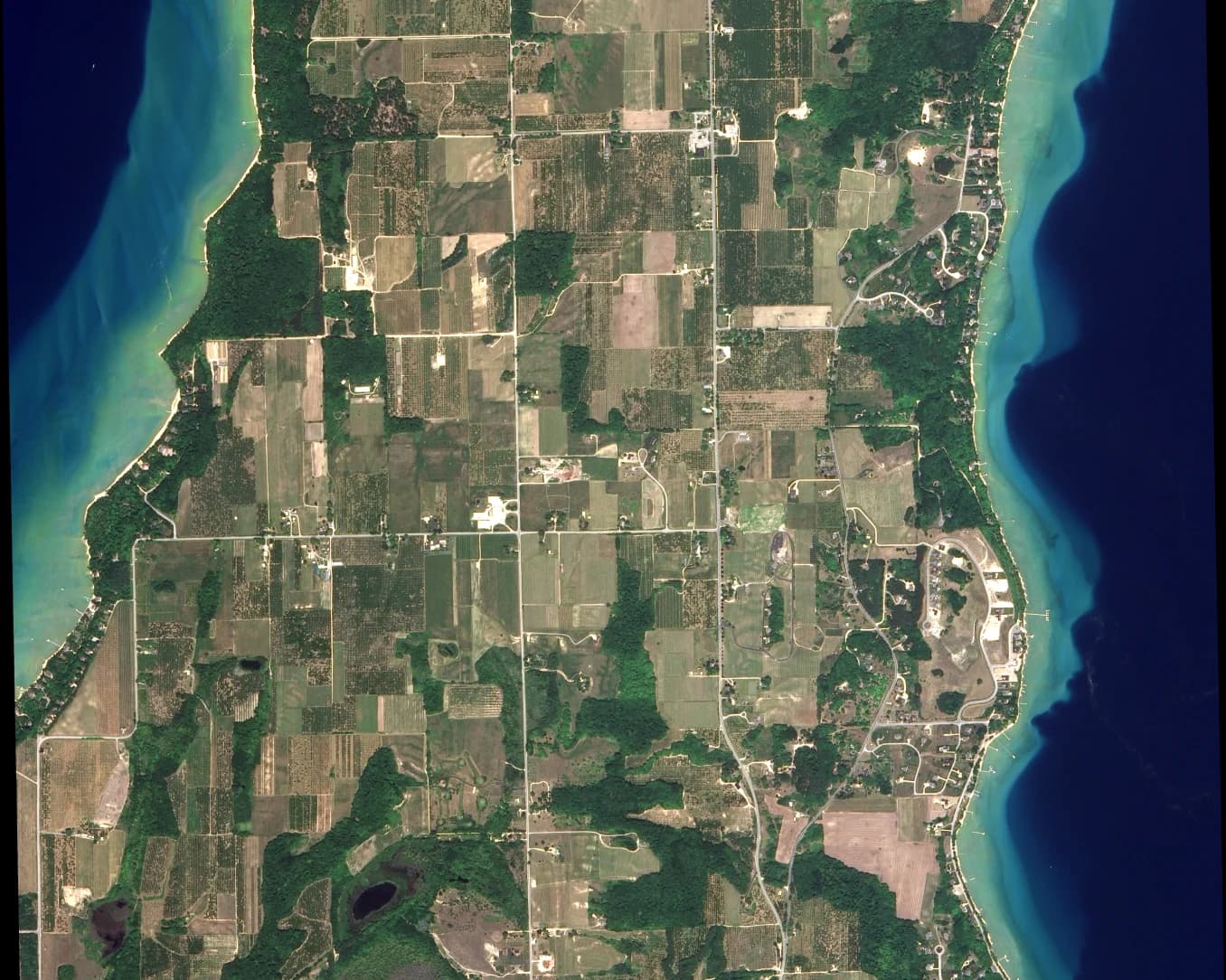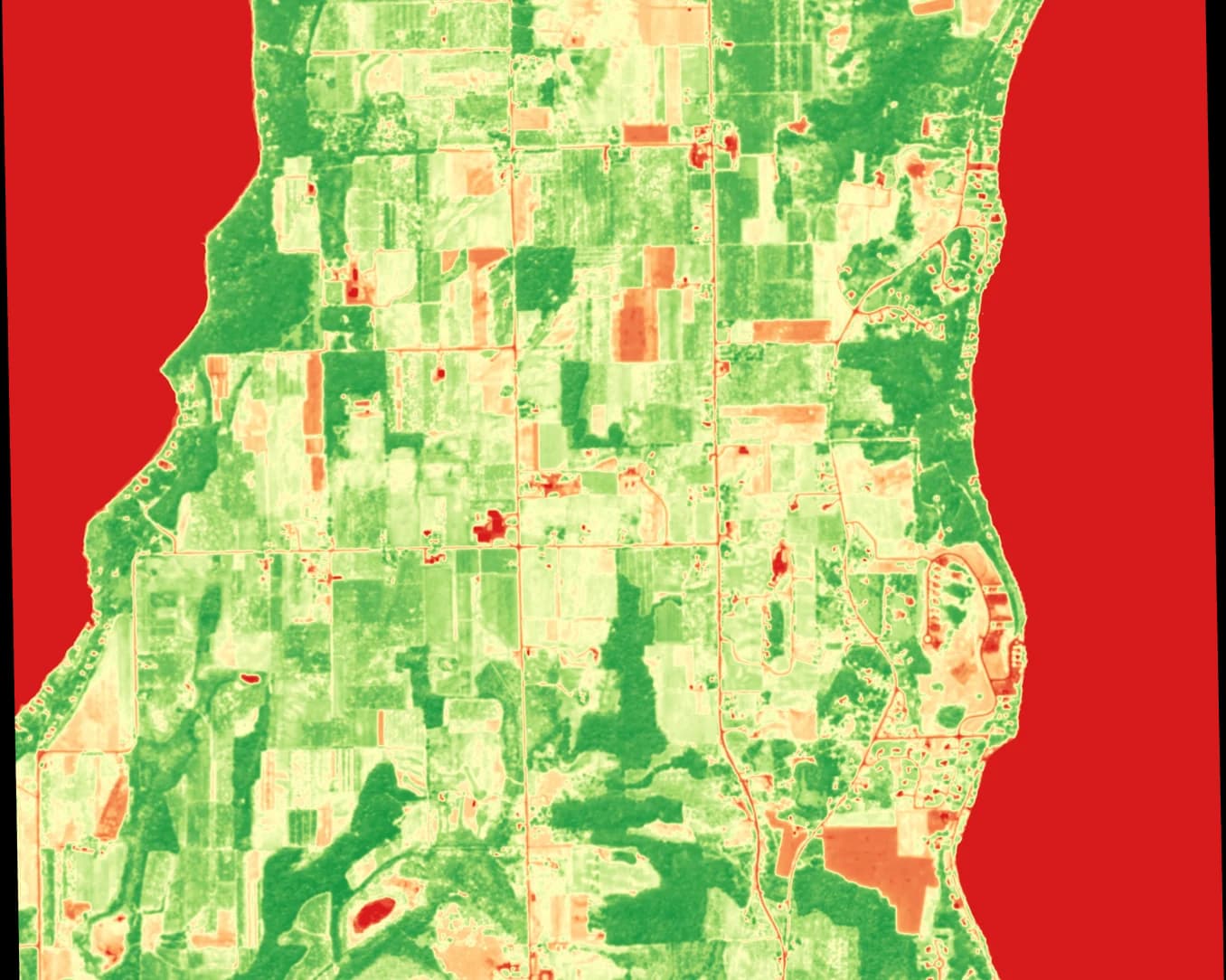
Enhancing Farming Efficiency with NDVI Analysis: A Comprehensive Overview for Farmers
In today's rapidly evolving agricultural landscape, farmers are constantly seeking innovative ways to improve productivity, optimize resource allocation, and increase crop yields. SkyFi is excited to now make crop monitoring easier than ever with the click of a button through SkyFi Insights. Normalized Difference Vegetation Index (NDVI) analysis is derived from satellite imagery and provides valuable insights into plant health, growth patterns, and stress detection, enabling farmers to make informed decisions to enhance their farming practices.
Understanding NDVI
The Normalized Difference Vegetation Index (NDVI) is a widely used remote sensing technique that quantifies the density and vigor of green vegetation. It is calculated by analyzing the reflectance of near-infrared (NIR) and red light wavelengths captured by satellites or aerial imagery sensors. NDVI values range from -1 to +1, with higher values indicating healthier and denser vegetation.


How is NDVI used?
Crop Health Monitoring
One of the primary applications of NDVI analysis is crop health monitoring. By periodically capturing NDVI imagery of your fields, you can assess the overall health and vigor of your crops. Healthy plants exhibit higher NDVI values and display in the resulting data as green, while stressed or unhealthy plants show lower values and display as red. By identifying areas of low NDVI values, you can pinpoint potential problems such as nutrient deficiencies, pest infestations, or diseases. This information empowers you to take targeted action, such as applying fertilizers, pesticides, or implementing specific management practices to address the issues promptly.
Yield Prediction
NDVI analysis can also be instrumental in predicting crop yields. By monitoring NDVI values consistently throughout the growing season, you can establish a correlation between the index and crop productivity. This data-driven approach enables you to estimate potential yields, facilitating better planning and resource allocation. By identifying areas with consistently low NDVI values, you can focus your efforts on those specific zones to minimize losses and maximize productivity.
Irrigation Management
Optimal water management is crucial for sustainable agriculture. NDVI analysis can help you optimize irrigation practices by providing insights into crop water requirements. By monitoring NDVI patterns over time, you can identify areas with high water stress and adjust irrigation schedules accordingly. This ensures that water is efficiently allocated where it is most needed, minimizing waste and promoting healthier plant growth.
Variable Rate Application
The use of NDVI analysis can also optimize the application of agrochemicals such as fertilizers and pesticides. By integrating NDVI data with precision agriculture techniques, farmers can use NDVI analysis to implement variable rate application (VRA) strategies. Instead of applying a uniform amount of inputs across the entire field, VRA adjusts application rates based on the specific needs of different zones identified through NDVI analysis. This approach reduces input costs, minimizes environmental impact, and maximizes the effectiveness of agrochemical applications.
Early Detection of Crop Stress
NDVI analysis enables early detection of crop stress, allowing proactive measures to mitigate potential damage. By regularly monitoring NDVI values, you can identify deviations from the norm that may indicate stressors such as nutrient deficiencies, water scarcity, disease outbreaks, or insect infestations. This early warning system empowers you to take immediate action, thereby minimizing losses and preserving crop health.
Incorporating NDVI analysis into your farming practices can revolutionize the way you manage your crops. By harnessing the power of Earth observation data and analysis, you can gain invaluable insights into crop health, optimize resource allocation, predict yields, and make data-driven decisions to enhance productivity. Embracing NDVI analysis as a farmer equips you with a competitive edge in today's dynamic agricultural landscape, enabling you to maximize yields, minimize losses, and contribute to sustainable farming practices.


